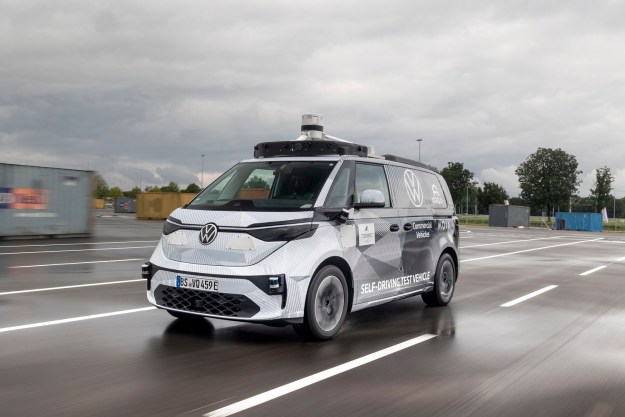Located in the heart of Autostadt, Volkswagen’s car towers are clearly visible from a distance because they’re among the tallest buildings in Wolfsburg, Germany, the company’s home town. They weren’t built just for show, however. Cars are stacked in either tower until their new owner picks them up. As you’d expect, they’re an immensely popular attraction.
Simply put, the towers are among the most impressive car-themed buildings in the world. They are exactly what their name implies: a pair of silo-like glass towers designed specifically to store cars. The bigger one of the two is roughly 160 feet tall, and it’s capable of storing about 400 cars. It’s the garage that every tech-obsessed gearhead dreams of.
The bigger of the two towers is roughly 160 feet tall, and it’s capable of storing about 400 cars.
Over two million customers have opted to take delivery of their new Volkswagen at the towers since Autostadt opened its doors in 2000. On average, about 500 cars are picked up there daily. With such a high turnover rate, the cars only remain in the towers for up to 24 hours. Volkswagen told Digital Trends that it has plenty of space to build additional towers, but it’s satisfied with two because its delivery center is already operating at full capacity.
Before we delve into how the car towers work, it’s important to note that the process of buying a new car is completely different in Europe than in the United States. Here, shoppers typically drive home in a model that’s already on the dealer’s lot. Cars are typically only ordered when buyers want a special paint color, or an uncommon option like a manual transmission. It’s generally the other way around across the pond, meaning customers configure a car precisely how they want it and wait a few weeks for the company of their choice to manufacture it.
Cars ear-marked for an Autostadt delivery are automatically transferred from the main Volkswagen factory in Wolfsburg to one of the two towers via a long underground tunnel, and immediately taken to a parking spot. Each tower is fitted with a massive central beam and two complex lift systems that travel at about six and a half feet per second. It takes precisely a minute and 44 seconds to transport a car from the bottom floor of the tallest tower to a parking spot on the very top floor. Volkswagen tells us the car towers are the fastest automatic parking systems in the world, a claim verified by the Guinness Book of World Records in 2014.
Customers are told when they need to arrive at the delivery center that’s adjacent to the towers well ahead of time. The center houses a gift shop, two restaurants, a new car showroom, and a store that sells accessories such as mud flaps and roof racks, so those who arrive earlier have plenty of ways to pass the time. They wait patiently in the center until their name is displayed on a big screen; that’s when they know that their car is on its way down.
An underground tunnel connects the car towers to Volkswagen’s main factory in Wolfsburg, Germany.
One of the two lifts pulls the car out of its parking spot and takes it to the bottom floor. Machines then transfer it to the delivery center, where license plates are installed and the buyer meets his or her new acquisition for the very first time. A vast network of machines and belts ensures the car is never actually driven, so the odometer displays precisely zero kilometers when the new owner hops behind the wheel for the first time. Exceptions are inevitably made for cars built outside of Wolfsburg, like the Beetle.
Of course, there are restrictions. The relatively small size of each parking bay means that bigger models like the Touareg don’t fit. Additionally, only customers who live in Germany, Austria, or Holland are eligible to tick the “car tower delivery” box when they order a new car. Finally, it’s exclusively offered to motorists who buy a Volkswagen or a SEAT, the company’s Spain-based division.
For years, the car towers were off-limits to the general public for safety reasons. Volkswagen recently changed its policy, and Autostadt visitors are now permitted to step inside by hopping on a special lift that takes them to an observation deck located on the top floor of the tallest tower. The platform only moves at about three feet per second; any faster would make it feel too roller coaster-esque, according to Volkswagen.
Once on deck, visitors can look down and watch the machinery in action, or look out and enjoy and commanding view of Wolfsburg. Whether you’re into cars, architecture, tech, or landscapes, there’s a good reason to put visiting the car towers on your bucket list.
Editors' Recommendations
- Your car insurance company knows more about you than you think
- Your next car could have TiVo built-in
- LG Display’s ‘invisible’ speaker brings sound to any surface in your car
- The next generation of Apple CarPlay will power your entire car, riding the trend of all-screen autos
- The Volkswagen Bus is back, and this time it’s electric







